Location: Lodge Creek Urban Buffer
Partners Involved: Thomas Jefferson Soil and Water Conservation District
Type of Buffer: Urban
Submitted by: Blair Blanchette
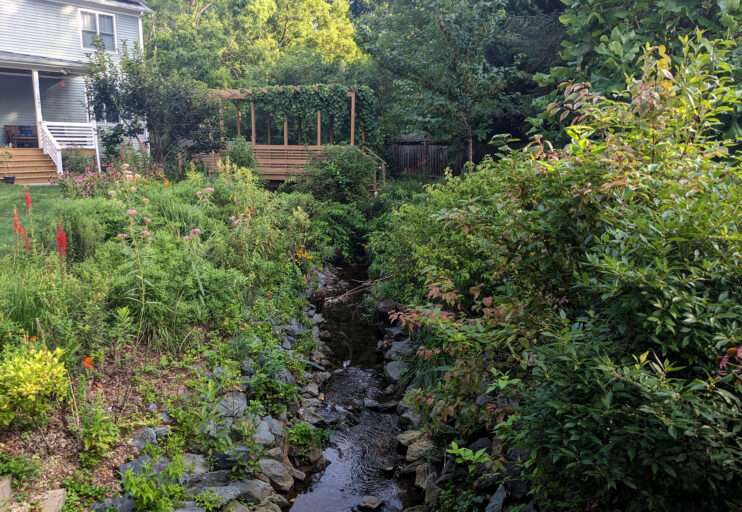
In Charlottesville, VA, a remarkable project has taken shape: a 1,500 square foot residential buffer aimed at revegetating 100 feet of Lodge Creek. This initiative not only addresses critical environmental concerns but also showcases the dedication of local residents to enhance their community.
Project Overview and Unique Aspects
The project site is a residence where Lodge Creek bisects the front yard. This area faces significant challenges, particularly during heavy rainstorms when stormwater runoff from the street overwhelms the creek. The volume of water can exceed the stream’s banks, resulting in runoff that extends over six feet into the yard and erodes the land above the rip-rapped area.
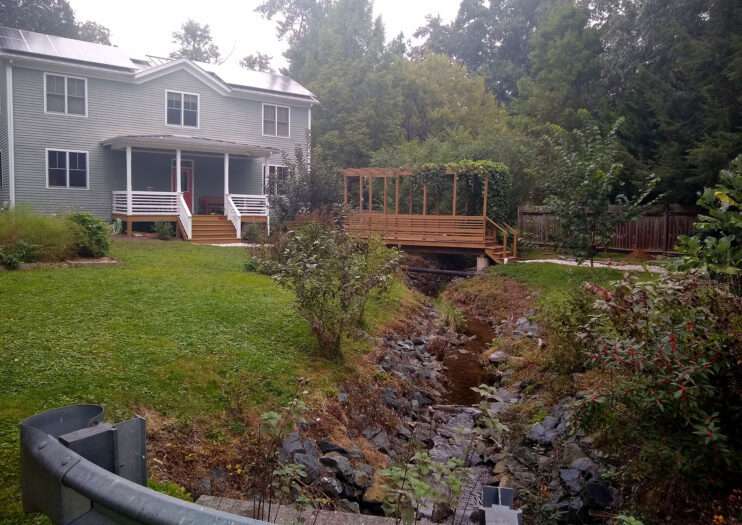
Before

Before
To combat this issue, the landowners decided to take action. They personally installed over 1,000 native plants to create a robust vegetative buffer, effectively stabilizing the soil and improving water quality. This diverse array of native species not only enhances the landscape but also plays a crucial role in supporting local biodiversity.
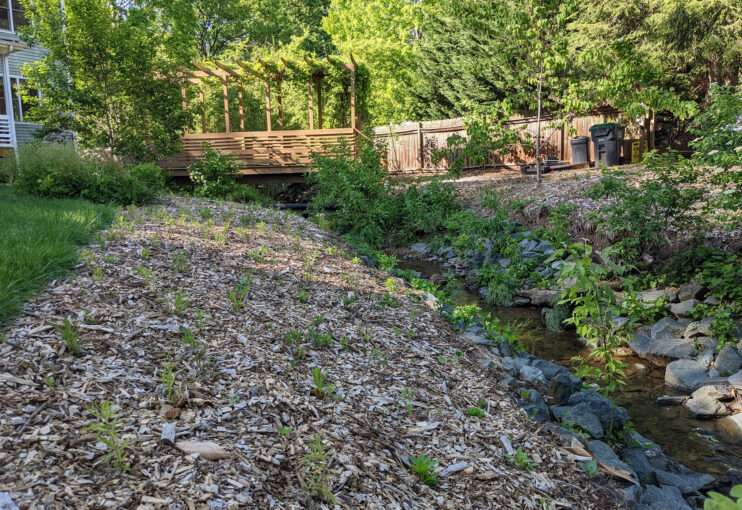
During Establishment
Community Involvement and Education
One of the most inspiring aspects of this project is the landowners’ commitment to sharing their efforts with their neighborhood. They aim to demonstrate the value of native plantings, serving as a model for sustainable landscaping practices. By actively engaging their community, they hope to inspire others to consider similar initiatives, fostering a culture of environmental stewardship.
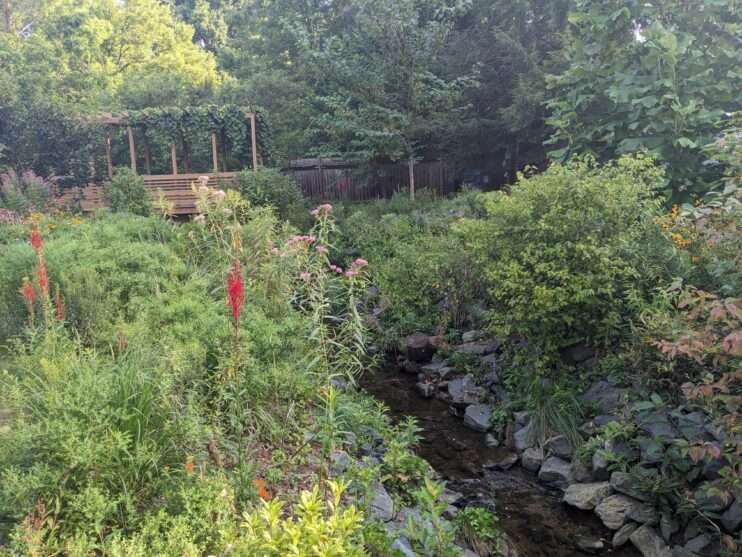
After
Importance of the Project
This project is vital for several reasons. First, it directly addresses the erosion and flooding issues caused by stormwater runoff, which can degrade water quality in local waterways. By establishing a vegetated buffer, the landowners are not only protecting their property but also enhancing the health of Lodge Creek.
Additionally, the project contributes to broader ecological goals by improving habitat for wildlife and promoting the use of native plants, which are better suited to local conditions and require less maintenance than non-native species.
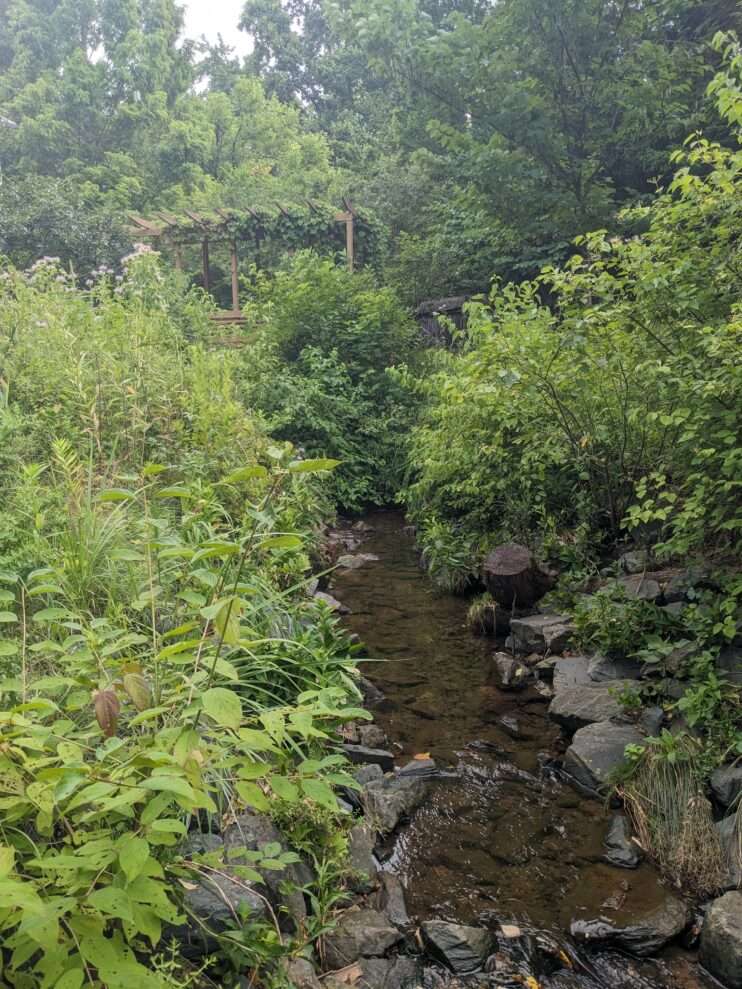
After
Challenges and Successes
The landowners faced the challenge of managing high volumes of fast-moving stormwater runoff, which required diligence and care in both the installation and ongoing maintenance of the buffer. Their hard work has paid off, resulting in a successfully vegetated buffer zone around the stream that effectively mitigates erosion and enhances the landscape.
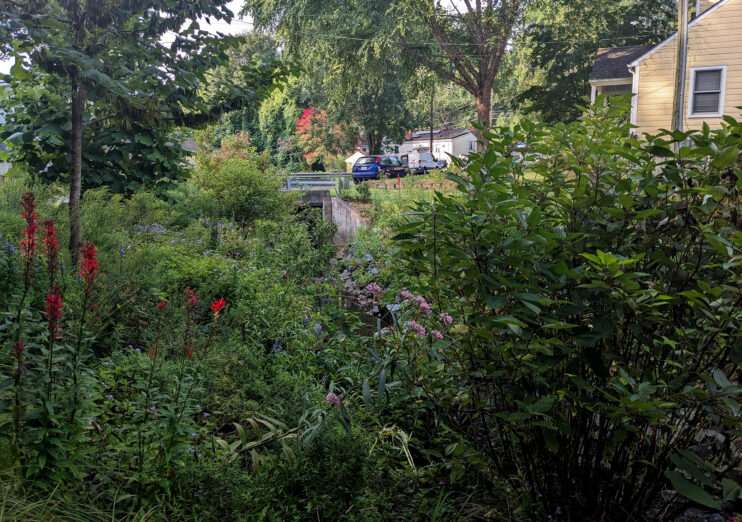
After
For more details and to see photos of this inspiring project, visit James River Consortium.
This project serves as a testament to the power of community involvement and the positive impact that dedicated individuals can have on their local environment. As more residents recognize the importance of such initiatives, we can work towards healthier watersheds and more resilient communities.
This post Is part of the fourth annual CCLC Riparian Buffer Month.
For more information check out our page


